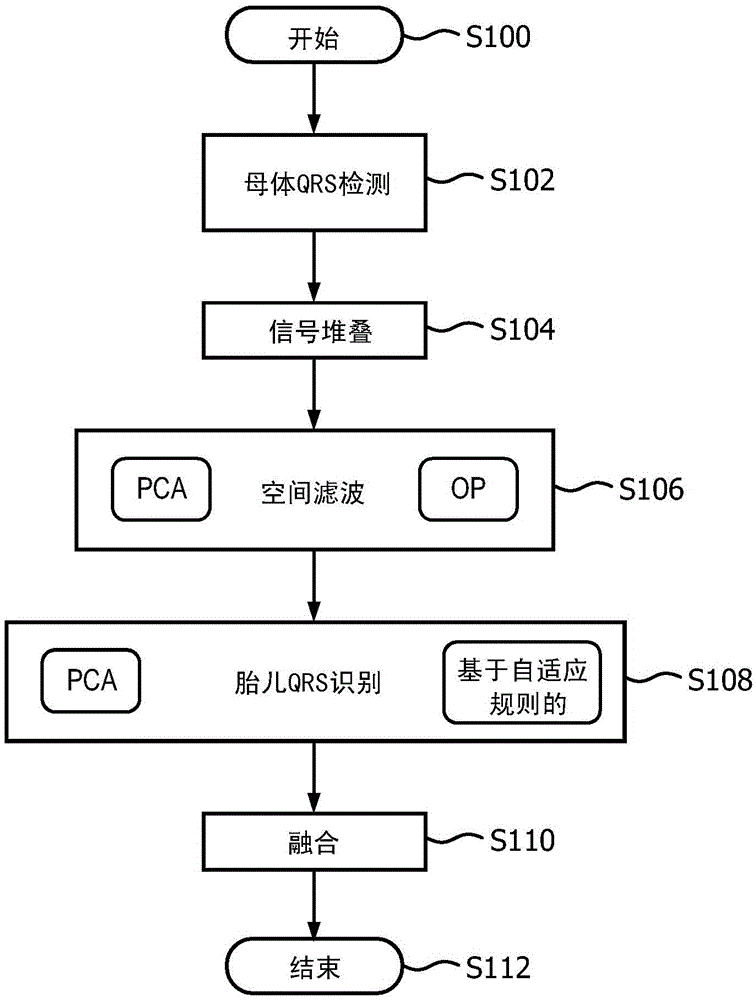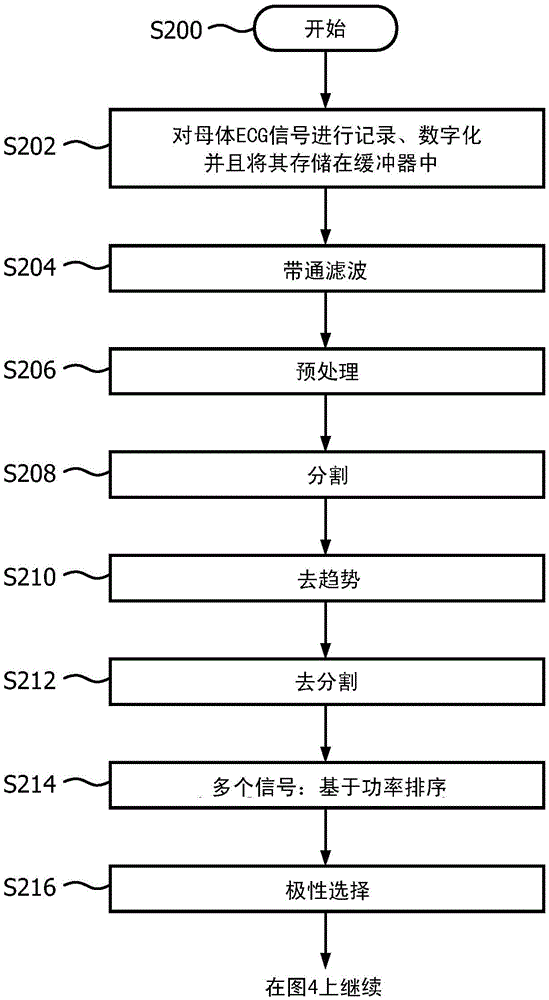Fetal heart rate extraction from maternal abdominal ECG recordings
A fetal heart rate, maternal technology, applied in the measurement of pulse rate/heart rate, diagnostic recording/measurement, medical science, etc.
- Summary
- Abstract
- Description
- Claims
- Application Information
AI Technical Summary
Problems solved by technology
Method used
Image
Examples
Embodiment Construction
[0045] The present application relates to a method for improved fetal heart rate extraction and interpretation. The present disclosure is inspired by the insight that current methods for monitoring fetal heart rate are unreliable and difficult to account for cesarean births resulting in an increase in healthy babies. Currently, the most accurate method for measuring fetal heart rate is direct fetal electrocardiography using fetal scalp electrodes, which is usually only used during labor due to its associated risks during routine pregnancy checkups. Non-invasive fetal ECG monitoring is measured by electrodes placed on the mother's abdomen, however, detecting the fetal heart rate is often difficult because the maternal ECG is usually more prevalent.
[0046] The present application presents an improved algorithm for extracting fetal heart rate from abdominal fECG recordings using spatial filtering, such as principal component analysis and orthogonal projection techniques for mat...
PUM
 Login to View More
Login to View More Abstract
Description
Claims
Application Information
 Login to View More
Login to View More - R&D
- Intellectual Property
- Life Sciences
- Materials
- Tech Scout
- Unparalleled Data Quality
- Higher Quality Content
- 60% Fewer Hallucinations
Browse by: Latest US Patents, China's latest patents, Technical Efficacy Thesaurus, Application Domain, Technology Topic, Popular Technical Reports.
© 2025 PatSnap. All rights reserved.Legal|Privacy policy|Modern Slavery Act Transparency Statement|Sitemap|About US| Contact US: help@patsnap.com



